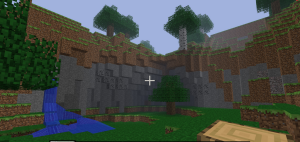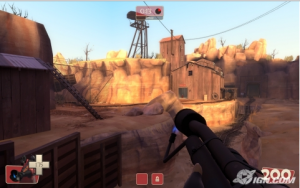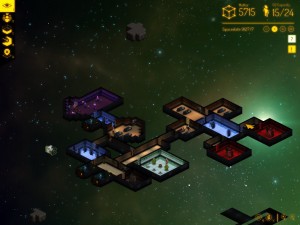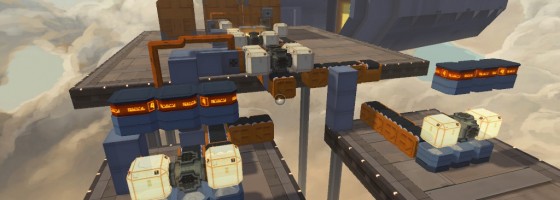On my podcast with Zach Barth discussing his latest game Infinifactory, we got on the topic of the stigma against early access and how a lack of standardization and varying quality has hurt the consumer confidence in it. He talked about how he was well aware of that when he decided to release Infinifactory on the early access platform. However during our chat we talked about what could be a possible alternative and one that Valve should consider.
Living Games:
When we talked about Infinifactory, Zach mentioned that for all intents and purposes the game was finished and up to the standards that he has for his studio. However, he knew that releasing Infinifactory in this state that the game wasn’t done in terms of content and that he wanted to continue working on the game and why he chose the Early Access tag for it.
But on the cast we talked about the idea that there should be another tag that you should be able to release your game under: Living Games. The idea is that a living game is one that is either being developed for the long haul like Kerbal Space Program, Dwarf Fortress and Prison Architect or it is a full release title that will continue to have work on it such as Hearthstone, World of Warcraft or Infinifactory.
The point is that the consumer is not buying something that still needs months before there is a game there, but that they are buying a quality product that will continue to be supported with new content and not just DLC. Zach has already listed a potential roadmap on reddit for Infinifactory and he’s looking to the people who bought it to decide what his team should be focusing on for the next three to six months.

Living Games are developed over the long run while still providing constant value to new and current consumers.
Living Games are titles where you can buy it now and still get a completed game or you can buy it later and get more content.
It’s a win-win for consumers as fans of the game will get something from the start that they will enjoy and only get better, while newcomers will get a bigger experience. It’s important however to talk about the difference between a living game and one that is DLC focused.
Adding vs. Building:
Under the basic definition that a living game is one that is continued to be supported by the game developer after launch, we could put any game that has DLC released as an example but that is not the case.
A living game is one where it’s not just about adding additional content but building new systems and design. A great case in point of the differences would be comparing Call of Duty and Team Fortress. Both titles feature additional content made for them but while each Call of Duty game has DLC released, none of them are game changing in terms of original content and systems.
Team Fortress on the other hand is practically a whole other game compared to its release with new game modes, maps, F2P, itemization and more. The point is that there should be a fundamentally different experience playing the game in a year from now, than it is at launch as opposed to just more of what was there at the start.
And another major point is that because you are changing the experience, living games are not about DLC which also rules out a game like Payday 2 who has embraced the DLC monetization model. Having a lot of DLC does not make a game living in the same way as having content that affects the experience like in Team Fortress or Hearthstone. Another factor regarding whether your game will be living or not is the expectation of the title; there is a big difference between releasing a $20 alpha and saying that the game will be done in two years vs. releasing a finished game and saying that you will continue to work on it.

Team Fortress 2 is a great example of a game that has changed drastically over the years thanks to continued development and not just DLC.
The best games that work as living titles are those that start out with “the hook” already implemented. Such as Kerbal Space Program, Minecraft and Infinifactory.
With those games, even at the start of their release, what made each game unique was already there, especially with Infinifactory which was considered “done” from Zachtronic’s point of view before going for the living game angle.
What killed Spacebase DF-9 who attempted this was a lack of communication and the fact that what was there did not provide the player with a strong foundation. Instead it was just a sample of what was to come that never did. Prison Architect also started out very rough, but they communicated what needed to be done and the game’s plan grew out over the months. Even with the early alphas, people could see exactly what the gameplay was in Prison Architect as the foundation was already in place.
As you can see, it takes a lot to make a living game and in some cases the original purchase is not enough to compensate the developer which takes us to the decision of how to bring in money to fund this continued development.
Keeping the Money Flowing:
To compensate for the fact that the game will continued to be worked on, game developers may alter the pricing of a game based on the amount of work being done to it like in Minecraft or Kerbal Space Program. In those titles, the pricing was far lower at the start to convince early adopters to buy in now while it was cheaper and then the cost rose as more work was done.
In some cases developers may just leave it alone and just leverage the work being done to keep people interested and relevant on the market. That last point is what Zach is planning on doing with Infinifactory and how he has already budgeted for 3 to 6 months of work, but he will alter that based on the game’s reception to the market.
Prison Architect is the current outlier who started out at a higher price to dissuade people who were only interested in playing the game and not providing feedback. Despite that, the game has earned them enough money for over 2 year’s worth of funding so far.
Just like with a regular game, it’s important to properly budget your title out and communicate that to the audience. Don’t expect people to be blindly throwing money at you with the promise of an update “in the future.”
A living game’s market is not the same as a kickstarter where the people are spending money on the promise. Here, they expect to get a great foundation that is only going to get better.
However with that said, a great foundation is not enough for a living game to keep going as people will expect progress.
The Long Haul:
The final point for this piece has to do with long, long term development. While some games like Infinifactory are going for a short term, many living games are aimed at a year or more in terms of development. As we talked about with Prison Architect, they have already past two year’s worth of development and funding not counting how long it took them to create the original content.
This raises the challenge of sustaining funding for that period of time and once again this requires good communication. Starbound which was billed as a science fiction take on Terraria started strong out of the gates with the promise from that tagline. However, the developers were planning for years of development and without properly communicating that, left many people to wonder if the project was ever going to be finished. To make matters worse, they went for a long time without any updates and just recently had an update to their stable build after months.

Spacebase could have been a great example of a living game, but not understanding the model and a lack of communication doomed it.
Just like with early access, you cannot disappear while working on your game. The perfect example of this failing would be Spacebase DF-9 who the developers were expecting five years of funding to develop the game when they stopped communicating after a few months.
A good living game is also one that doesn’t show up one day “complete” but should reach a point of being a completed concept relatively early in its development. From there, the game should continue to get better and be a great purchase for new players while still being expanded on for current consumers.
Kerbal Space Program, Infinifactory and Prison Architect are examples of this. KSP’s rocket science and simulation models which are the main hooks were already engaging very early into the game’s alpha and Prison Architect started to show promise around alpha 10. Infinifactory took a shortcut by the fact that it was released as a finished product in terms of content and will be further enhanced from there.
The Future of Early Access:
One of the problems with Early Access as we’ve talked about is that there is no standard for what constitutes an early access game. With living games, this can be a way to distinguish titles in terms of quality and content while avoiding the stigma that has become attached to Early Access.
Game development has changed over the years and it is now possible for someone to want to develop a game that is more than just a onetime finished product. And with games like Minecraft and Kerbal Space Program as poster child examples of this, living games can be the way for developers to be able to work on their dream projects for a very long time.



